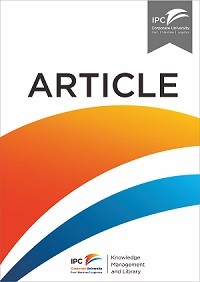Article
Application of El Farol model for managing marine terminal gate congestio
Truck queuing at marine terminal gates has long been recognized as a source of emissions problem due to the large number of trucks idling. For this reason, there is a great deal of interest among the different stakeholders to lessen the severity of the problem. An approach being experimented by some terminals to reduce truck queuing at the terminal is to provide live views of their gates via webcams. An assumption made by the terminals in this method is that truck dispatchers and drivers will make rational decisions regarding their departure times such that there will be less fluctuations in truck arrivals at the terminal based on the live information. However, it is clear that if dispatchers send trucks to the terminal whenever the truck queues are short and not send trucks when the truck queues are long, it could lead to a perpetual whip lash effect. This study explores the predictive strategies that need to be made by the various dispatchers to achieve the desired effects (i.e. steady arrival of trucks and hence less queuing at the seaport terminal gates). This problem is studied with the use of an agent-based simulation model and the solution to the well known El Farol Bar problem. Results demonstrate that truck depots can manage (without any collaboration with one another) to minimize congestion at seaport terminal gates by using the provided real-time gate congestion information and some simple logics for estimating the expected truck wait time.
Ketersediaan
Informasi Detail
- Judul Seri
-
Research in Transportation Economics
- No. Panggil
-
ATC PO RIF a
- Penerbit
- USA : Elsevier., 2011
- Deskripsi Fisik
-
9 p.
- Bahasa
-
English
- ISBN/ISSN
-
0739-8859
- Klasifikasi
-
PO
- Tipe Isi
-
-
- Tipe Media
-
-
- Tipe Pembawa
-
online resource
- Edisi
-
-
- Subjek
- Info Detail Spesifik
-
-
- Pernyataan Tanggungjawab
-
Omor Sharif
Versi lain/terkait
| Judul | Edisi | Bahasa |
|---|---|---|
| Port and terminal management | 2013 Ed. | en |
| A simulation based decision support system for logistics management | en |
Lampiran Berkas
Komentar
Anda harus masuk sebelum memberikan komentar

 Karya Umum
Karya Umum  Filsafat
Filsafat  Agama
Agama  Ilmu-ilmu Sosial
Ilmu-ilmu Sosial  Bahasa
Bahasa  Ilmu-ilmu Murni
Ilmu-ilmu Murni  Ilmu-ilmu Terapan
Ilmu-ilmu Terapan  Kesenian, Hiburan, dan Olahraga
Kesenian, Hiburan, dan Olahraga  Kesusastraan
Kesusastraan  Geografi dan Sejarah
Geografi dan Sejarah